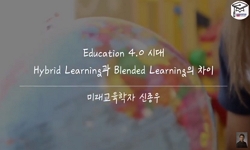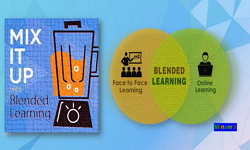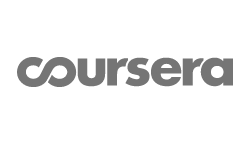목적 미용 전공 학생의 블렌디드러닝 미용교과 수업에 따른 학습실재감, 학습몰입도, 학습만족도의 상관관계를 분석하고자 설문조사를 시행하였다. 방법 블렌디드러닝 미용교과 수업을 받...
http://chineseinput.net/에서 pinyin(병음)방식으로 중국어를 변환할 수 있습니다.
변환된 중국어를 복사하여 사용하시면 됩니다.
- 中文 을 입력하시려면 zhongwen을 입력하시고 space를누르시면됩니다.
- 北京 을 입력하시려면 beijing을 입력하시고 space를 누르시면 됩니다.

미용 전공 학생의 블렌디드러닝 미용교과 수업에 따른 학습실재감, 학습몰입도, 학습만족도의 상관관계 분석 = Beauty major student s blended learning beauty class. Correlation analysis of learning reality, learning commitment, and learning satisfaction accordingly
한글로보기https://www.riss.kr/link?id=A108071908
- 저자
- 발행기관
- 학술지명
- 권호사항
-
발행연도
2022
-
작성언어
-
- 주제어
-
KDC
373
-
등재정보
KCI등재
-
자료형태
학술저널
-
수록면
57-69(13쪽)
- 제공처
-
0
상세조회 -
0
다운로드
부가정보
국문 초록 (Abstract)
목적 미용 전공 학생의 블렌디드러닝 미용교과 수업에 따른 학습실재감, 학습몰입도, 학습만족도의 상관관계를 분석하고자 설문조사를 시행하였다. 방법 블렌디드러닝 미용교과 수업을 받은 경험이 있는 미용 전공 학생 310명을 대상으로 설문을 하였다. 블렌디드러닝 미용교과 수업인식의 하위요인을 교육환경, 교사영역, 수업과정으로 구성하고 학습실재감의 하위요인을 인지적 실재감, 감성적 실재감, 사회적 실재감으로 구성하여 각 요인들의 타당성을 검정하였고 상관관계를 분석하였다. 결과 블렌디드러닝 미용교과 수업의 효과적 전공수업에서 헤어미용은 높게, 네일미용은 낮게, 선호하는 온라인 강의에서 동영상 강의는 높게, 화상강의는 낮게, 효과적 수업비율에서 오프라인과 온라인의 반반 병행을 높게, 온라인 위주를 낮게 인식하였다. 헤어미용 전공은 교육환경과 학습적 실재감을 높게, 네일미용과 메이크업은 교육환경과 학습적실재감을 낮게 유의미하게 인식하였다. 오프라인과 온라인의 비율에 따른 미용교과 수업인식, 학습실재감, 학습몰입도, 학습만족도에는 유의한 차이가 없었다. 미용교과 수업인식의 하위요인 모두 감성적 실재감, 인지적 실재감, 사회적 실재감, 학습몰입도, 학습만족도에 정(+)의 영향을 미쳤다. 미용교과 수업인식 하위요인 중 교육환경이 가장 크게 학습실재감에 영향을 미쳤고 수업과정이 학습몰입도와 학습만족도에 가장 크게 영향을 미치는 것으로 나타났다. 결론 블렌디드러닝 미용교과 수업인식은 학습실재감에, 수업인식과 학습실재감은 학습몰입도와 학습 만족도에 긍정적 영향을 미쳤다. 블렌디드러닝 미용교과 수업 시 실시간 화상강의와 동영상강의를 병행하는 수업이 필요하고 교육자의 전문성 강화와 미용이론 심화교육이 필요하며 온라인 위주 강의보다는 온라인과 오프라인 비율을 적당히 조절할 필요가 있으며 특히 네일미용과 메이크업 교육환경과 교과과정에 대한 검토 및 개선이 필요할 것으로 사료된다.
다국어 초록 (Multilingual Abstract)
Objectives A survey was conducted to analyze the correlation between learning reality, learning commitment, and learning satisfaction according to blended learning beauty subject classes of beauty students. Methods A questionnaire survey was performed...
Objectives A survey was conducted to analyze the correlation between learning reality, learning commitment, and learning satisfaction according to blended learning beauty subject classes of beauty students. Methods A questionnaire survey was performed against a total of 310 students who had blended learning cosmetology course before. The factors of the awareness of blended learning cosmetology course were divided into educational environment, faculty and curriculum while learning presence factors were classified into cognitive presence, emotional presence and social presence. Then, the validity of each factor was tested, and their correlations were analyzed. Results In terms of the level of recognizing blended learning cosmetology courses, ‘hairdressing’ was high while ‘nail styling’ was low in effective major courses. In preferred online classes, ‘video class’ was high while ‘video conferencing’ was low. In effective class percentage, ‘both online and offline courses given equally’ was high while ‘online course-oriented’ was low. In hairdressing major, ‘educational environment’ and ‘learning presence’ were high. In Nail styling and makeup, on the contrary, they were taken low with statistical significance. In awareness of cosmetology courses, learning presence, learning flow and learning satisfaction by the online and offline percentage, no statistical significance was found. All cosmetology course factors had a positive influence on emotional presence, cognitive presence, social presence, learning flow and learning satisfaction. Among the factors concerning the awareness of cosmetology courses, ‘educational environment’ revealed the biggest influence on learning presence while ‘curriculum’ showed the largest effect on learning flow and learning satisfaction. Conclusions The awareness of blended learning cosmetology courses had a positive influence on learning presence. In addition, course awareness and learning presence showed a positive effect on learning flow and learning satisfaction. For blended learning cosmetology courses, both realtime teleconferencing and video class should be given. Furthermore, it is required to make the faculty build their competence and give in-depth theory curriculum. Instead of focusing on online curriculum only, the percentage of online and offline courses should be adjusted properly. In particular, nail art and makeup education environments and curriculum should be reviewed and improved accordingly.
목차 (Table of Contents)
- Ⅰ. 서론 Ⅱ. 연구 방법 Ⅲ. 연구 결과 및 논의 Ⅳ. 결론 및 제언 참고문헌
- Ⅰ. 서론 Ⅱ. 연구 방법 Ⅲ. 연구 결과 및 논의 Ⅳ. 결론 및 제언 참고문헌
동일학술지(권/호) 다른 논문
-
- 학습자중심교과교육학회
- 조혜진(Cho, Hyea-Jin)
- 2022
- KCI등재
-
LiFE사업 단과대학 J대학의 학습경험 학점인정제도(RPL) 사례 연구
- 학습자중심교과교육학회
- 황유진(Hwang Yoojin)
- 2022
- KCI등재
-
부모의 긍정적 양육태도가 중학생의 학업열의에 미치는 영향 : 자아존중감과 삶의 만족의 매개효과
- 학습자중심교과교육학회
- 정문경(Jeong Moonkyeong)
- 2022
- KCI등재
-
- 학습자중심교과교육학회
- 권정현(Kwon Jung-Hyun)
- 2022
- KCI등재




 스콜라
스콜라




